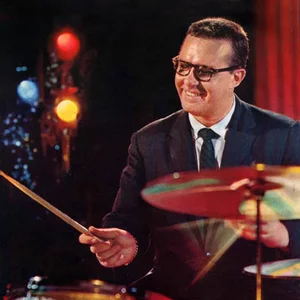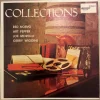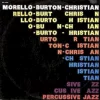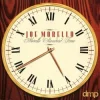Biography Joe Morello
Joe Morello (17 July 1928 – 12 March 2011) was a American Jazz drummer best known for his twelve and a half-year stint with The Dave Brubeck Quartet. He was frequently noted for playing in the unusual time signatures employed by that group in such pieces as Take Five and Blue Rondo à la Turk.
Born in Springfield, Massachusetts, USA, Morello began studying violin at age six, and three years later was featured with the Boston Symphony Orchestra as soloist in the Mendelssohn Violin Concerto. By age 15 he had switched to drums, first studying with a show drummer named Joe Sefcik and then studying with the legendary George Lawrence Stone. "I'd work out of his book, Stick Control, and after I could play the sticking patterns I'd start throwing in accents in various places," Morello recalls. Stone was so impressed with Morello's ideas that he incorporated them into his next book, Accents & Rebounds, which is dedicated to Morello. Later, Morello studied with Radio City Music Hall percussionist Billy Gladstone, one of the most technically advanced drummers of all time.
"My training was basically classical snare drum technique," Morello says. "But I used it the way I wanted to. The objective of a good teacher is to bring out the creativity of the pupil. Some teachers insist that a student play a certain style. Let the students be themselves and\ develop their talent. Give them a knowledge of the instrument; once they have that, they can use it the way they want to use it."
After moving to New York City, Morello worked with an impressive list of jazz musicians including Johnny Smith, Tal Farlow, Phil Woods and Stan Kenton. While working with Marian McPartland at the Hickory House, Morello's technical feats attracted the attention of a legion of drummers, who would crowd around him at a back table during intermissions to watch him work out with a pair of sticks on a folded napkin. Jim Chapin tells stories about unsuspecting drummers who would try to impress Morello by showing off their fancy licks. Morello would listen intently, then say, "Is this what you're doing?" as he'd play their licks back at them twice as fast.
After a period playing in McPartland's trio, Morello declined invitations to join both Benny Goodman and Tommy Dorsey's band, favoring a temporary two-month tour with the Dave Brubeck Quartet in 1955. However, Morello remained to play with Brubeck for well over a decade, only departing in 1968. His 12-year stint with Brubeck made Morello a household name in the jazz (and drumming) world, and on the quartet's recording of "Take Five" he performed one of the most famous drum solos in jazz history. "When people use the word ‘technique,' they usually mean ‘speed,'" Morello says, commenting on the solo. "But the ‘Take Five' solo had very little speed involved. It was more about space and playing over the barline. It was conspicuous by being so different."
After leaving Brubeck in 1968 Morello became an in-demand clinician, teacher and bandleader. He has appeared on over 120 albums, the latest of which is his own Going Places, released last year (1993) on DMP. He has written several drum books, including Master Studies, published by Modern Drummer Publications, and has done an instructional video for Hot Licks titled The Natural Approach to Technique. Morello has won countless music polls over the years, and was elected to the Modern Drummer magazine Hall of Fame in 1988.
Morello says that the secret to technique is relaxation. "It's a matter of natural body movement," he explains. "When your hand is relaxed, your thumb isn't squeezing against your first finger and your wrist isn't at some funny angle. The stick just rests in the hand in a very natural position. When you strike a practice pad, you should be able to hear the ring of the wood stick. The average person chokes the stick, and that comes through on the drum. The whole thing is relaxation and letting the sticks do most of the work.
"Technique is only a means to an end," Morello stresses. "The more control you have of the instrument, the more confidence you will get and the more you will be able to express your ideas. But just for technique alone - just to see how fast you can play so you can machine-gun everybody to death - that doesn't make any sense. Technique is only good if you can use it musically."
Throughout his career, Joe Morello has embodied that ideal to the fullest, achieving renown for both his technique and his musicality, and inspiring generations of players through the example he has set of always striving for excellence.
"I'm sure there are people who disagree with my playing," he says, "and there are some who think I'm the greatest thing that ever happened. That's what is so great about this art form. It would be awfully boring if everyone played the same. You would only have to own one record.
"I've heard people say, ‘This drummer swings more than that one.' I think ‘swing' and ‘feel' are individual things. There is not just one way to swing. It's a feeling that comes from within that you project through the drums.
"I'm not the end-all and know-all of the drums. There's a lot out there I don't know, but I'm trying to do the best I can. The main thing is to be original."
Creative Commons By-SA License
 FM
FM





